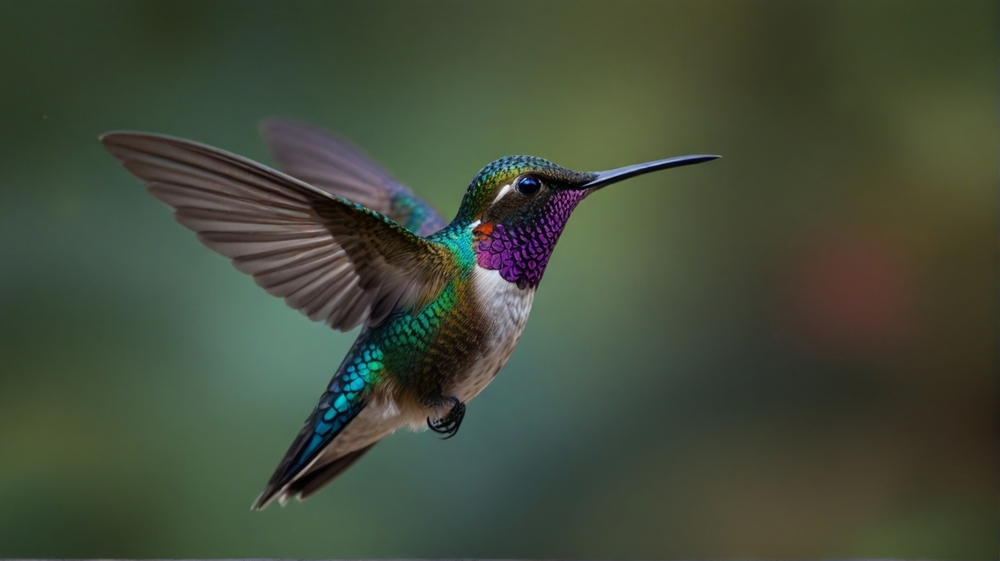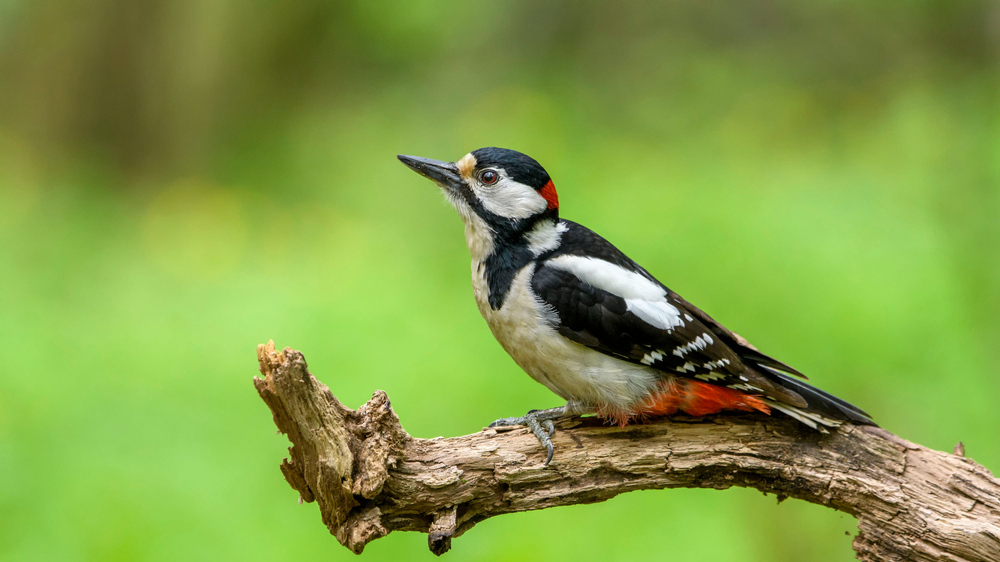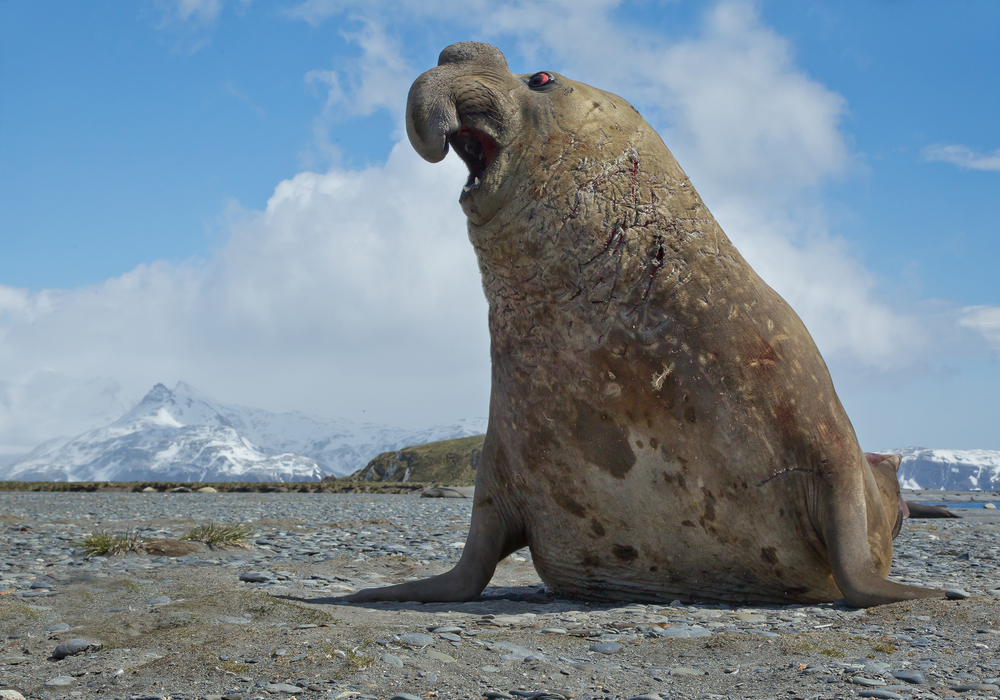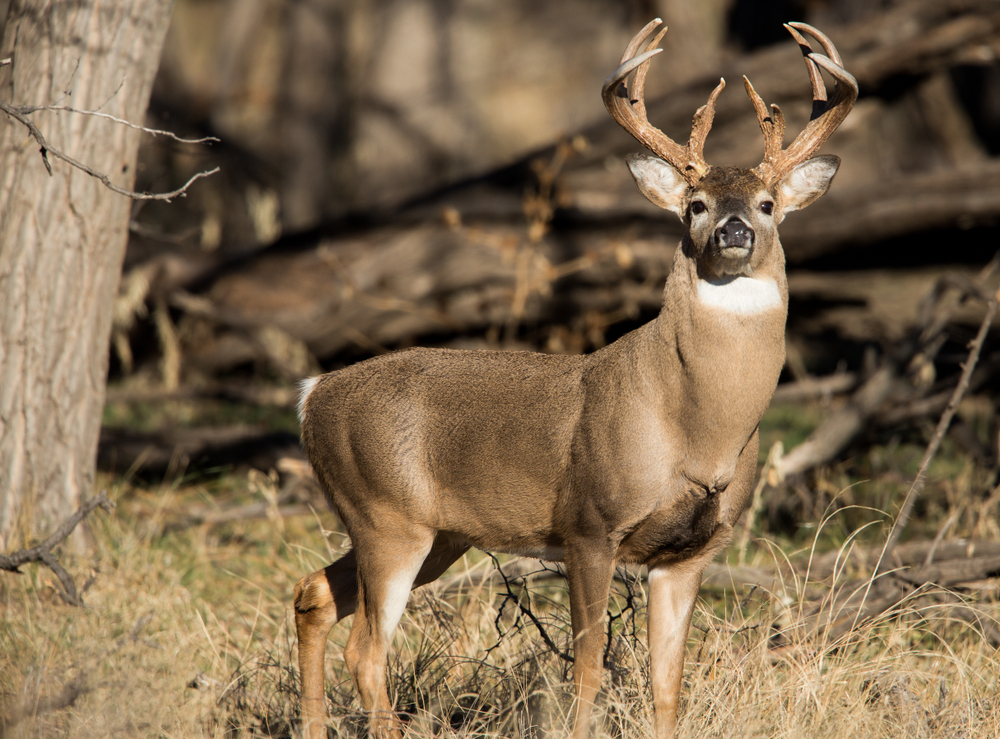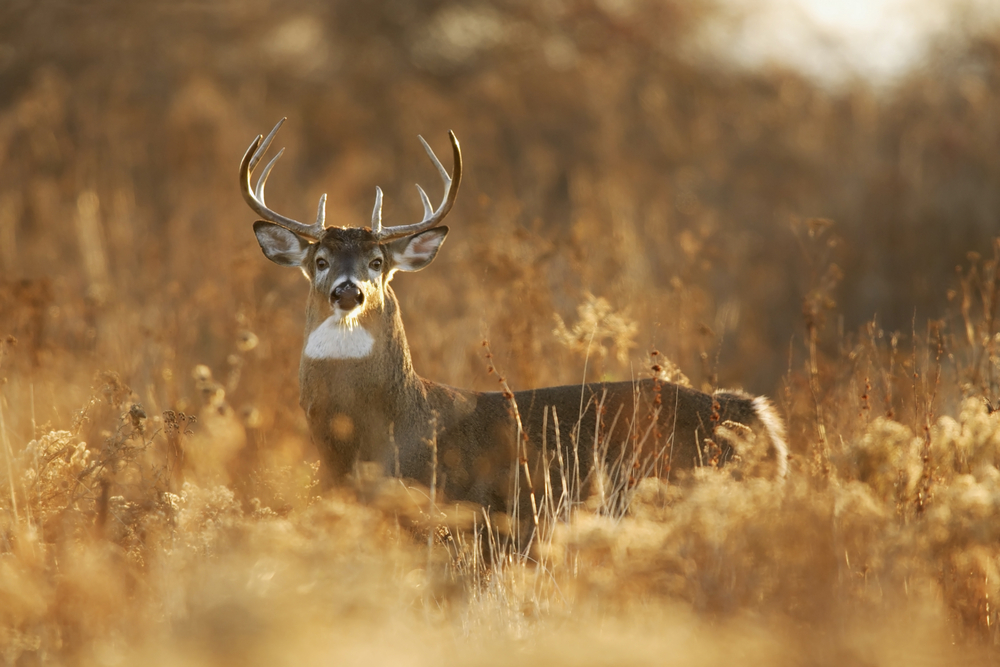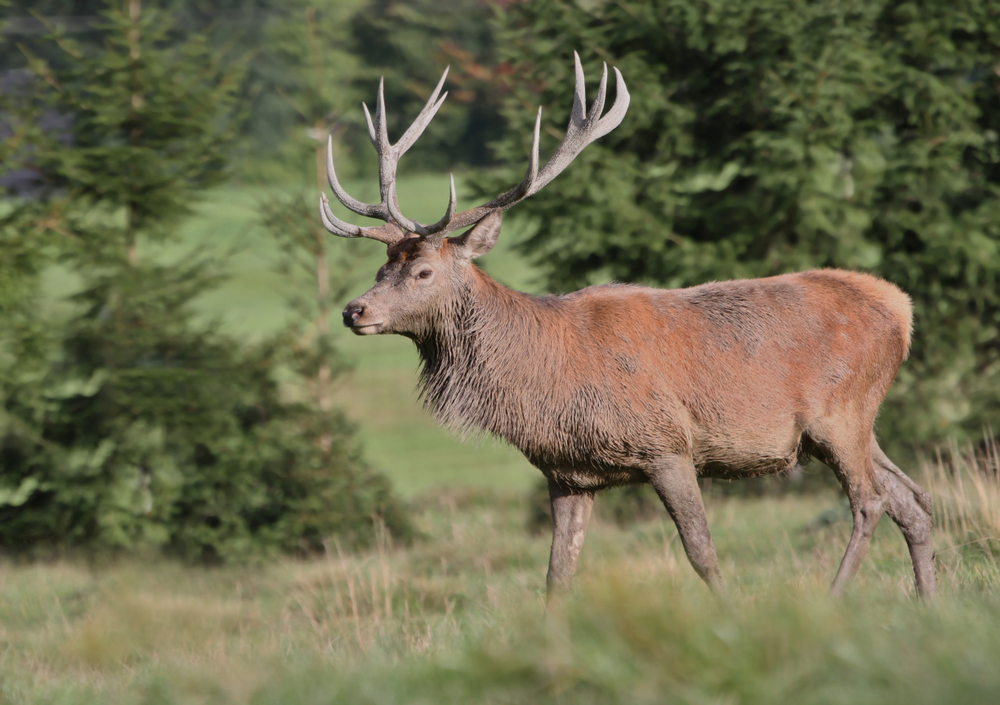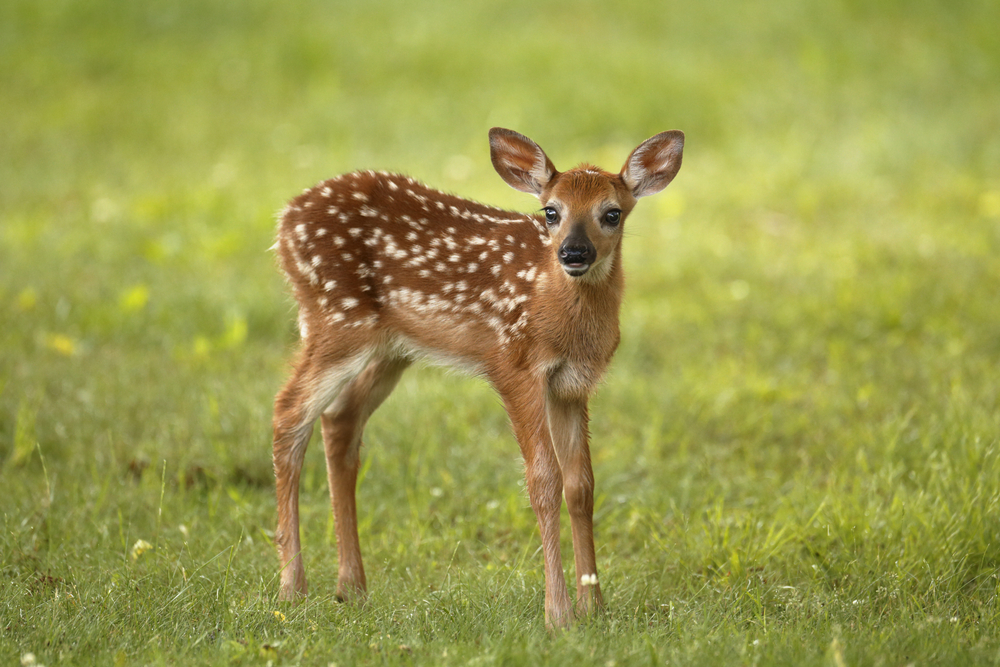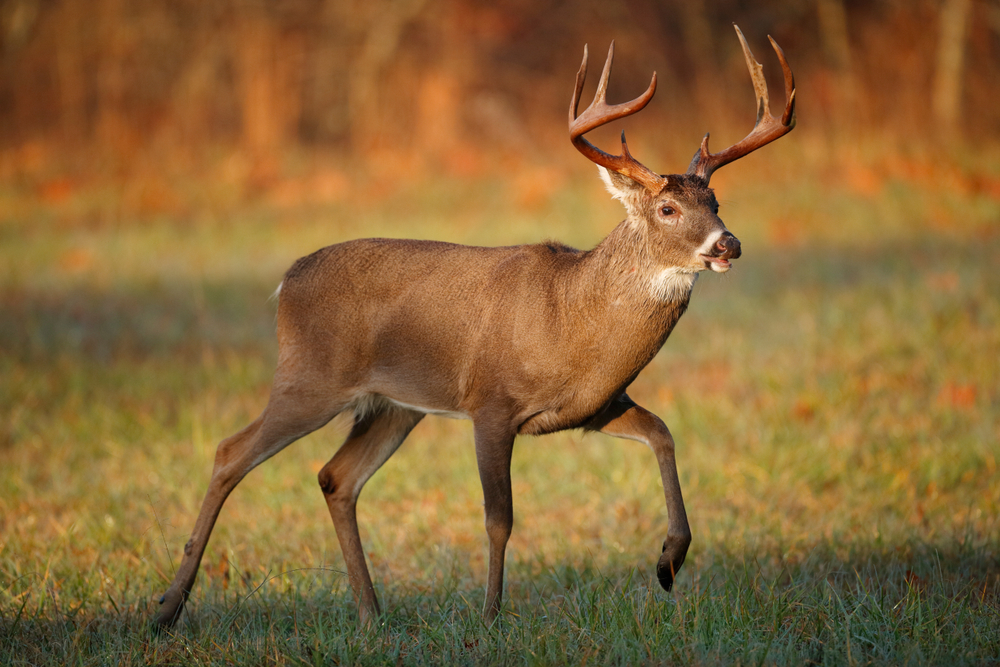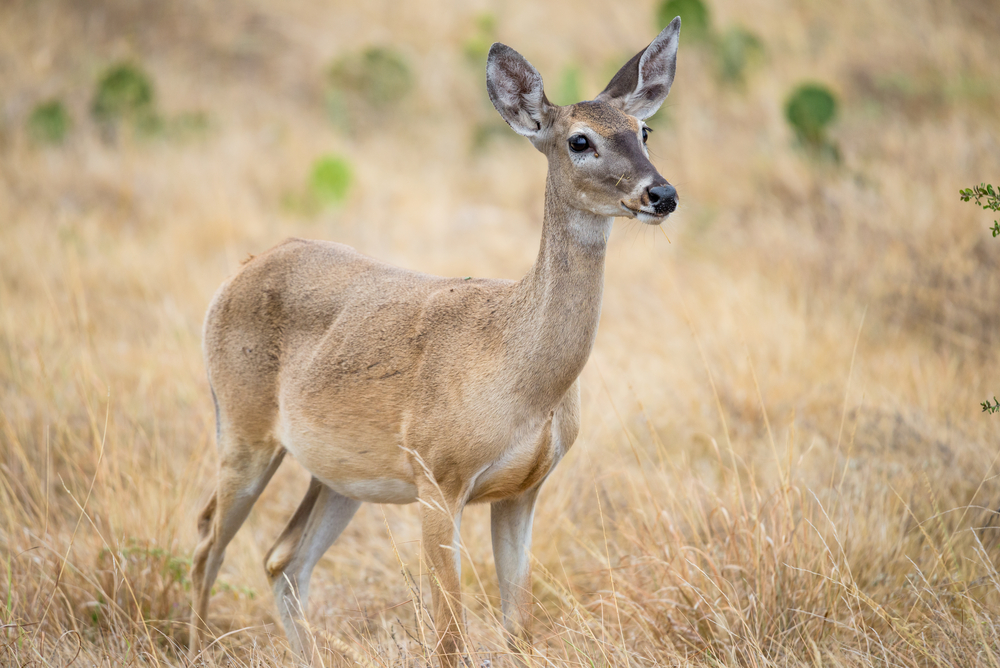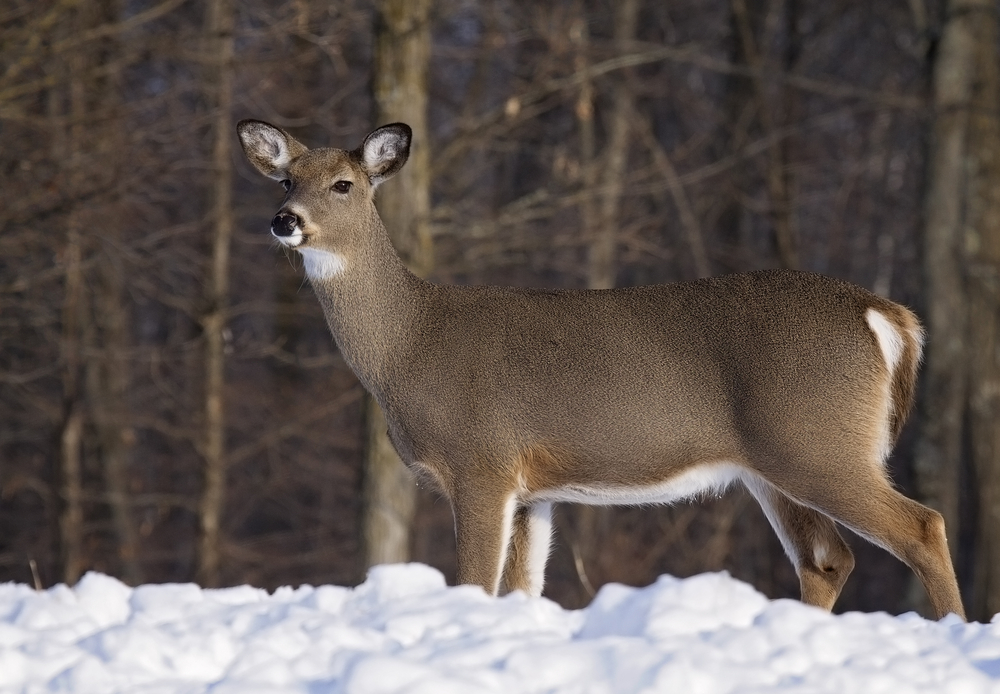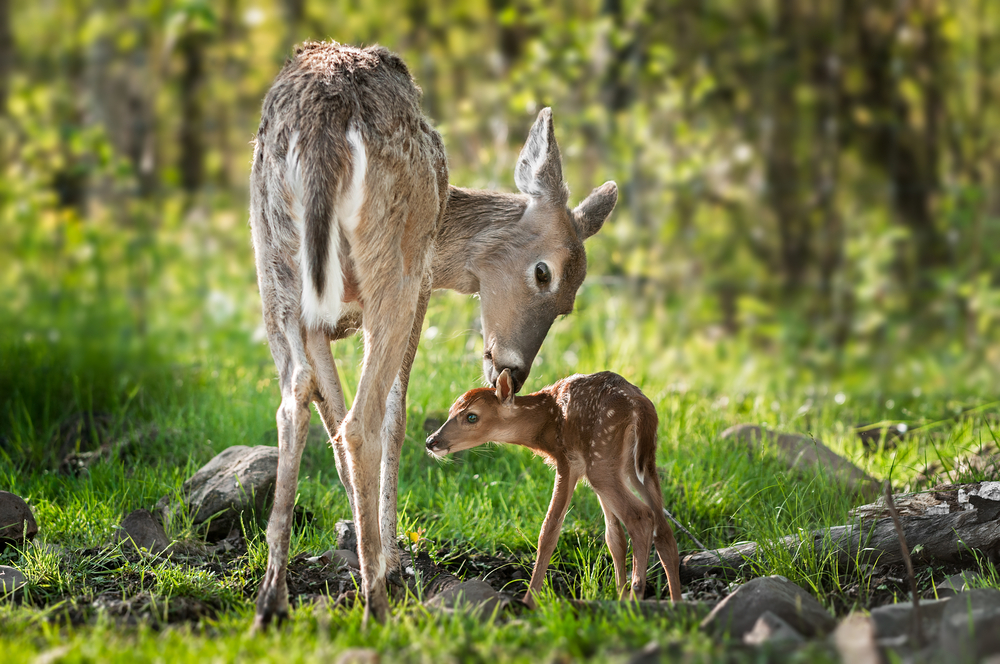White-tailed Deer and Mule Deer are distinct species within the deer family and have several notable differences:
- Tail Appearance: The most obvious difference is in their tails. White-tailed Deer have a tail with a white underside, which they raise like a flag when alarmed, revealing the white. Mule Deer, on the other hand, have a black-tipped tail on a white rump.
- Ear Size: Mule Deer have larger, mule-like ears compared to White-tailed Deer. Their ears are also proportionally larger relative to their head size.
- Antler Structure: The antlers of White-tailed Deer typically have a main beam with tines growing upward from it. Mule Deer antlers, however, are bifurcated – they fork into two branches, and each branch may fork again.
- Body Size and Build: Mule Deer are generally larger and stockier than White-tailed Deer. They also tend to have a slightly different body shape.
- Gait: Mule Deer have a unique bounding gait known as ‘stotting,’ where all four feet come off the ground simultaneously. White-tailed Deer do not exhibit this gait; they tend to run with a more fluid motion.
- Habitat Preference: While there is some overlap in their ranges, White-tailed Deer are more adaptable to a variety of habitats, including forests, farmlands, and suburban areas. Mule Deer prefer arid, rocky environments and are more commonly found in the western parts of North America.
- Behavioral Differences: White-tailed Deer are known for their agility and speed, and they tend to be more secretive and nocturnal compared to Mule Deer, which are often seen during the day.
Understanding these differences is important for wildlife enthusiasts, hunters, and ecologists, as each species has unique behaviors and adaptations that influence their survival and interaction with the ecosystem.


















